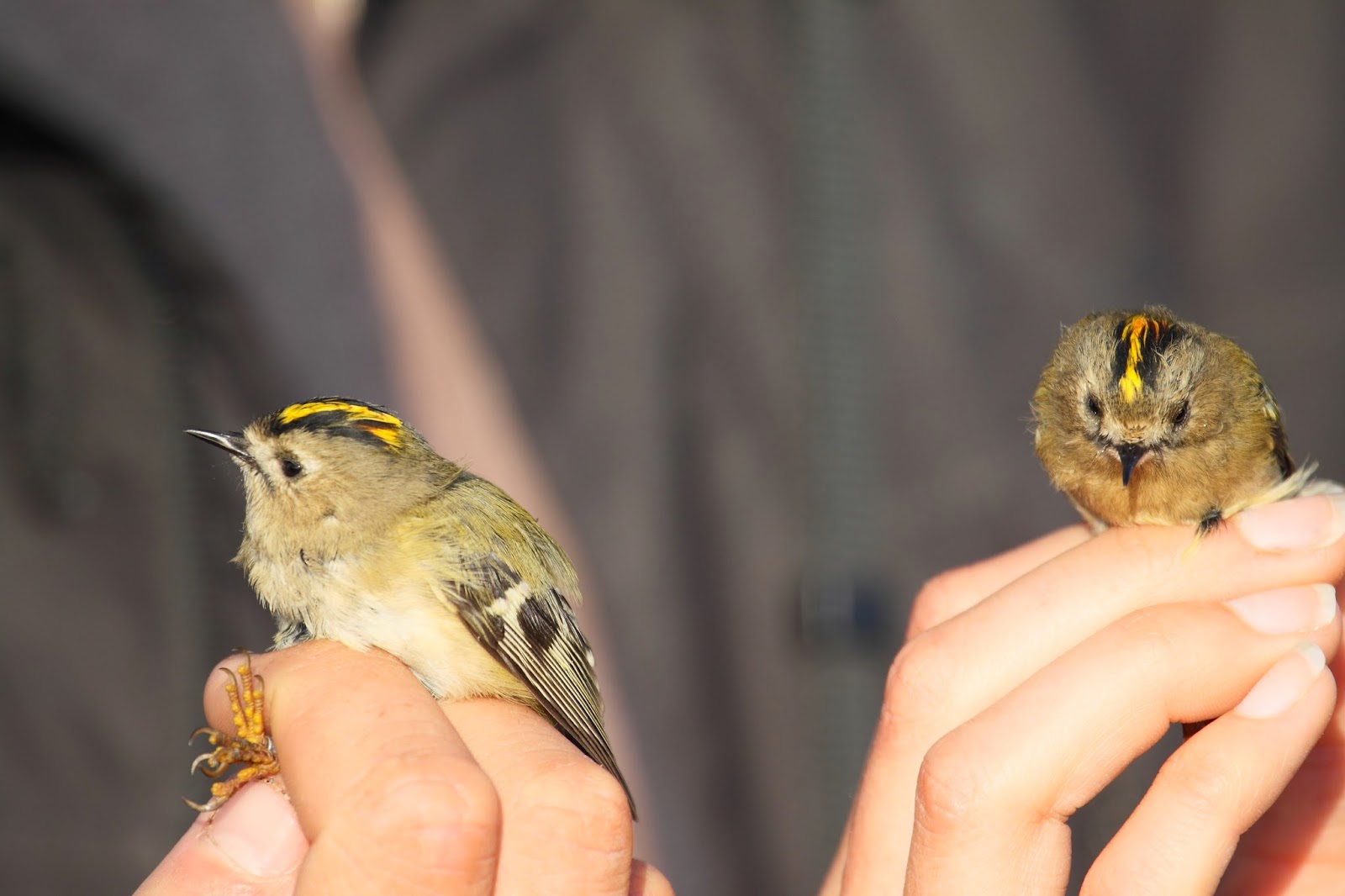When I find myself cursing about being on the Farnes (a very very rare occasion), it quickly turns into a sense of being totally unreasonable and I tell myself that I should be ashamed for it is the highest privilege to work and live in such an incredible place. However, on this occasion I found it somewhat more justifiable. The story begins with a broken zodiac engine, happening at a risky time of year. It rendered us boatless for a few days, and clearly the "weather gods" got wind of this (no pun intended) and the winds promptly swung easterly. With no rain, it means that the Outer group is perfectly placed to attract rares, and the Inner group perfectly placed to allow jealous observation. And this is what happened, and within a two day period on Brownsman the team had been joined by two Red Breasted Flys, a Red Backed Shrike, Little and Rustic Bunting and a host of other lovely migrants, while we were blessed with some Scandinavian Robins.... A Corncrake on the West Wides offered some light relief, but it was with some anxiety that we waited for a visitor boat to get out and catch a glimpse of what was a lovely Rustic Bunting on Tuesday. These lovely buntings breed in Northern Europe and Asia and winter down in South East Asia, and this represents the second Farnes record in two years.
 |
| Rustic Bunting (Thanks to David Kinchen-Smith for the photo) |
I should also mention that on Inner Farne we did have some nice highlights, including a Pied Flycatcher that needed some hair-dryer treatment and a young Redstart trapped and ringed during the day.
 |
| Soggy Pied Fly. Really perked up after a warming blow dry |
 |
| Look at that tail!! Juvenile Redstart |
So feeling very satisfied Lana and I headed for the West coast of Scotland for some lovely family time. Knowing that easterlies were still a-blowing but with things looking like they would be calming down, we thought the risk was minimal... We were wrong. News broke this afternoon of two new arrivals, one a Common Rosefinch, but the other... a Golden Oriole. Now I have seen a few in the UK but to see one on the Farnes would be an amazing experience. And to share a tiny island with a RB Shrike, Little Bunting, Rustic Bunting, Common Rosefinch and Golden Oriole... Need I say more.
However, this is the way of birding, and something that we all need to learn to deal with at some point. So as I sit here having soaked up some lovely Scottish Sun. with my newly acquired Yellow Fever vaccination certificate for Argentina sitting next to me, looking forward to two more days of luxury running water, I feel very happy, for myself and also for the team enjoying some wonderful birds. I must also add that my eternal optimism (be it good or bad) allows me to believe that when we return on Saturday, all those lovely birds will be there waiting with open arms (or wings)!


















